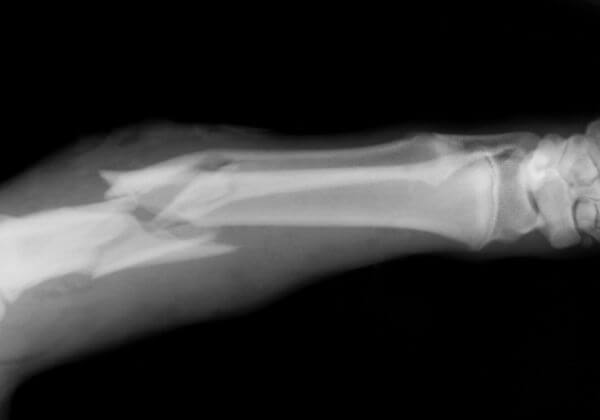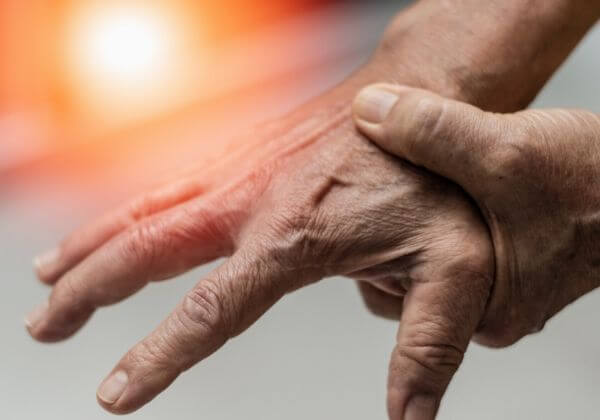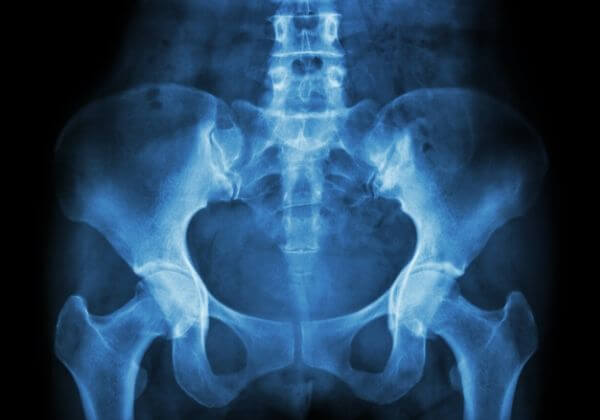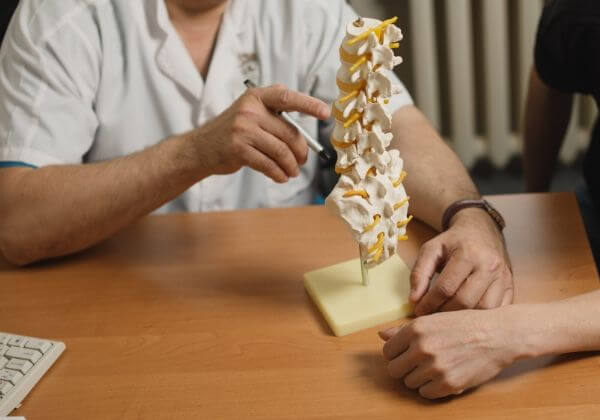When excessive force is applied to a bone, it can break. Some fractures only crack the bone, while others can break it completely.
Your bones are generally strong and designed to absorb a lot of pressure. It’s also common that bones break as a result of injury, falling on ice or other hard and unsafe surfaces, and from overuse. Broken bones can also be linked to underlying health conditions and diseases.
There are several different ways your bones can break, and it usually depends on the circumstances, amount of pressure applied, and any underlying factors that may weaken your bones.
♦ Simple fracture: Your bone breaks in two pieces
♦ Compound fracture: A piece of bone protrudes through your skin
♦ Closed fracture: The bone is crushed
♦ Stress fracture: Overuse or repetitive motion causes a small crack
♦ Comminuted fracture: When an injury causes the bone to shatter into three or more fragments
♦ Transverse fracture: The break occurs across the shorter part of the bone rather than along its length.
♦ Avulsion fracture: Injury causes the tendon or ligament to pull off a piece of bone

You will typically feel pain in the bone or around the surrounding area. There may also be swelling in the area that is broken.
At the time of the break, you may hear a snapping sound, and if the break is in a limb, it may look unusual. Your skin can bruise or bleed at the site of a bone break, and with compound fractures, bone can pierce through the skin completely. It will also be difficult to move with a broken bone.
Injury and falling are common ways to break a bone, but there are also conditions that can weaken your bones, making breaks and fractures more likely. If there is no apparent reason for the break, then one of these conditions could be the underlying cause.
♦ Osteoporosis: This condition weakens bones and increases their risk for fractures and breaks. This risk is significantly increased for elderly adults who may be more prone to falling. Medications to increase bone density, as well as natural supplements, can increase bone strength to help reduce the risk of fractures in those with osteoporosis.
♦ Osteomalacia: This bone-weakening disease prevents bone formation, and is often caused by a vitamin D deficiency. It is also strongly associated with kidney disease and celiac disease. If not treated, your risk for fractures is much greater, and you may also develop permanent bone deformities.
♦ Osteosarcoma: This is a bone cancer that develops near the knee or the shoulder. Tumor growth causes severe pain and weakens nearby bone tissues, which results in more frequent breaks.
♦ Brittle bone disease: This disorder is typically present from birth, and it results in very fragile bones that break easily. Children that come from a family with this condition are more likely to inherit it.
♦ Paget’s disease: This disease interferes with your body’s ability to recycle, meaning that new bone cannot easily replace old bone. As a result, older bones remain and become fragile and misshapen. This mostly occurs in the spine, legs, pelvis, and skull.
♦ Gaucher’s disease: This is a very rare inherited metabolic disorder where you are deficient in an enzyme that allows for the excess accumulation of fat. The disease also produces bone defects with regards to bone metabolism, and structural problems can develop.
♦ Ewing’s sarcoma: This rare cancerous tumor affects bone tissue and is most common among young people. Drug and radiation therapy are required to kill the tumor and prevent it from causing permanent damage to the bones.

You want to stabilize the bone first before you move or can get to a doctor. Ice the area and elevate the injured area to reduce swelling, and if there is a wound, gently clean it to prevent infection. A splint can stop the break from moving if the injury is in your arm or leg. If the break is in your hip, pelvis, or spine, then you need to stay where you are until help arrives. Moving when the break is in these locations can cause serious and permanent damage.
Depending on the type of fracture or break, healing broken bones may require hospitalization. X-rays will be used to determine the severity of the break, and then it will be stabilized and aligned before being placed in a cast.
Some breaks, such as a broken collar bone, cannot have a cast, so a sling is used instead. In some cases, surgery may be required, and a doctor will insert pins, screws, or plates into the bone to hold it together as it heals.
How do broken bones heal? Your old bone is constantly being replaced by new bone. Initially, a broken bone will involve blood, and when a clot forms the break will be temporarily plugged. The immune system triggers an inflammatory response to start healing in the area. Bone stem cells produce cartilage and new bone that will heal the break.
You can help to heal bones faster with natural treatments such as calcium, magnesium, and vitamin D supplements.

Broken bones can heal with the right amount of time and support. The right diet can also help to speed up recovery. The more nutrient-rich your diet is, the better chance your body has of recovering and replacing the broken bone with new bone.
♦ Plenty of protein: Half of your bone’s structure is made from protein, so it is necessary for any bone healing process. The best sources of protein include eggs, fish, poultry, beans, nuts, seed, and yogurt.
♦ Calcium: This is a fundamental mineral for bone development and healing, so be sure to eat more milk, yogurt, cheese, fortified cereals, almond milk, and broccoli.
♦ Vitamin D: Without this vitamin, calcium cannot be absorbed to help build your bones. The sunlight provides vitamin D, so spending a few minutes outdoors each day will increase levels as well as eating fish, egg yolks, and fortified milk.
♦ Vitamin C: This is another important building block for bones as it helps to make collagen, which will heal fractures. Fresh fruits, especially citrus fruits along with vegetables, will get you all the vitamin C you need.
Weakened bones are prone to fractures and breaks. While most breaks will require some medical treatment and support, there are natural things you can do to enhance bone healing. Eating the right foods is one aspect of natural treatment, but there are additional treatments you need to consider.
Bones that are in the process of healing are more susceptible to inflammation and infection, so it is important to reduce inflammatory activity as much as possible. It is also essential to provide your body with supportive ingredients that will promote bone healing and strength.
The ingredients below all work to reduce inflammation, pain, and swelling that may be associated with a broken bone.
♦ Astaxanthin: This powerful antioxidant delivers inflammation and pain relief for joints. By scavenging free radicals that damage the tissues of your joints, pain can be reduced, and mobility is improved as bones heal.
♦ Collagen: Collagen is the most abundant protein in the human body. It is also an essential component of your bones and cartilage. Collagen production slows with age, so supplements that maintain levels in the body can support bone healing and also reduce the risk of fractures.
♦ Hyaluronic acid: Inflammation in the joints associated with diseases like arthritis cause pain and restrict mobility. Hyaluronic acid is a natural substance that prevents stiffness and induces the growth of new cartilage and bone tissue.
Curcumin and krill oil are powerful anti-inflammatory agents that naturally reduce inflammation to allow time for your bones to heal.
Broken bones can take weeks or even months to heal, depending on the extent of the injury. Fractures in children heal faster than adults, with the average adult break needing at least six weeks of recovery time.
After the bone is healed, you may be required to do certain exercises to strengthen the muscles around the bone, as these were not used while the cast was in place. With proper treatment and aftercare, broken bones can heal very well, and you can get back to life as usual.




















